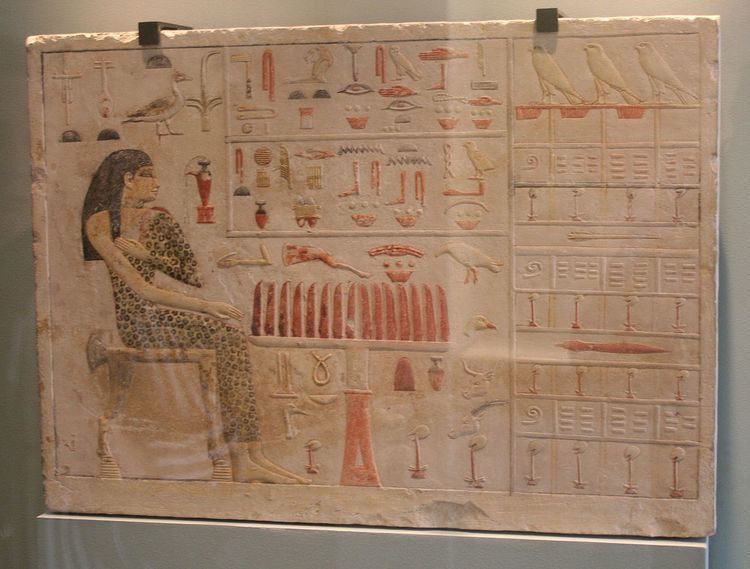 | ||
The ancient Egyptian Bone-with-meat hieroglyph is one of the Gardiner's sign list glyphs listed under Parts of Mammals. It is one of many – (52) in the category, as concepts were also presented by the body parts; for example hindquarters, and forequarters, represented things behind something, and alternatively, things at the forefront. The 'bone-with-meat' hieroglyph represented: ancestry, also inherit, (presumably bodies-souls, after death).
Contents
The Ancient Egyptian language usage of the hieroglyph means, isw, iw' (inherit, etc.); a determinative for the femur, (iw'); and swt, for the tibia.
The Old Kingdom usage on slab steles, from the middle of the 3rd millennium BC, shows the proto-type form of the hieroglyph as a 'cut of meat', much like the spare ribs or beef ribs of the present era. The slab stela shows the bone as a multiple of two curved bones, much like the spare rib.
Cartouche usage
An example of a wall relief scene from Edfu at the Temple of Edfu shows a cartouche with the joint of meat hieroglyph. Another less common hieroglyph pictured within the cartouche is the vertical standing mummy hieroglyph.
Rosetta Stone usage
The 196 BC usage in the Ptolemy V Rosetta Stone addresses the power of ancestry. In the Rosetta Stone, line R5, the joint of meat hieroglyph precedes a 'list of reward "qualifications" for the Pharaoh Ptol. V'.
".... As a reward-(i.e. ancestral inheritance), for these things have given him (Ptolemy V) the gods and goddesses: victory, might, life, strength, health, (AUS) and everything good to the fullest possible extent of them;..."